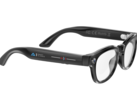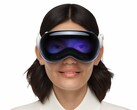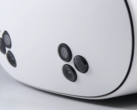Meta has released new details on its Aria Gen 2, wearable glasses designed for AI and AR researchers. The second generation glasses improve upon the first with longer runtimes, always-on sensors, speakers, and foldability.
The Aria Gen 2 has multiple cameras. The main camera has HDR capabilities, with a dynamic range of 120 dB imaging high-contrast scenes. A new ambient light sensor with a UV sensor helps optimize exposure control by automatically detecting whether the user is seeing artificial light indoors or natural light outdoors, and a global shutter eliminates pixel read-out blurring.
The glasses have an additional four computer vision cameras covering a field-of-view of approximately 300-degrees, allowing the glasses to create 3D depth maps to the front, sides, and rear. An 80-degree overlap of the vision cameras captures a stereo-image. Additional eye tracking cameras sense the exact location wearers are looking at.
The nose is put to use with the Aria heart-rate-detecting nose pad. A microphone is also integrated into the nose pad to pick up voices better in noisy environments, and speakers are now included to hear AI responses.
Multiple Aria Gen 2 glasses are more precisely synchronized using timing information sent between devices using sub-gigahertz radio technology, with an accuracy under one millisecond. The glasses have global positioning, barometer, magnetometer, and six degrees of freedom sensors to track their location through space.
The programmable glasses are scheduled to arrive later in 2025. In the meantime, readers can enjoy a pair of audio-only Meta smartglasses sold here on Amazon.
























